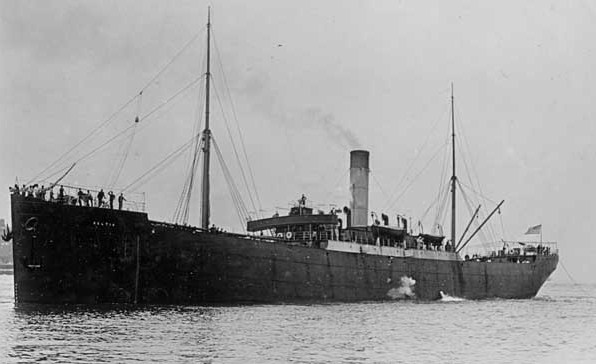Storeship on:
[Wikipedia]
[Google]
[Amazon]
Combat stores ships, or storeships, were originally a designation given to ships in the
 Both the United States and the United Kingdom used stores ships in the War of 1812. In both the Mexican–American War and in the American Civil War, captured enemy prizes that were not considered "warlike" enough to be sold for prize money often became stores ships for a naval force operating where no friendly ports are nearby. took part in the Baja California Campaign in the Mexican–American War. In both the Spanish–American War and the Filipino War the US Navy acquired the stores ship and other similar vessels to serve in its Asiatic Squadron.
Both the United States and the United Kingdom used stores ships in the War of 1812. In both the Mexican–American War and in the American Civil War, captured enemy prizes that were not considered "warlike" enough to be sold for prize money often became stores ships for a naval force operating where no friendly ports are nearby. took part in the Baja California Campaign in the Mexican–American War. In both the Spanish–American War and the Filipino War the US Navy acquired the stores ship and other similar vessels to serve in its Asiatic Squadron.
 Three ships were transferred from the British Royal Fleet Auxiliary to MSC in 1981–83: on January 18, 1981; on November 5, 1981 and on December 13, 1983. Five Navy s were transferred to
Three ships were transferred from the British Royal Fleet Auxiliary to MSC in 1981–83: on January 18, 1981; on November 5, 1981 and on December 13, 1983. Five Navy s were transferred to
Age of Sail
The Age of Sail is a period that lasted at the latest from the mid-16th (or mid- 15th) to the mid- 19th centuries, in which the dominance of sailing ships in global trade and warfare culminated, particularly marked by the introduction of naval ...
and immediately afterward that navies used to stow supplies and other goods for naval
A navy, naval force, or maritime force is the branch of a nation's armed forces principally designated for naval warfare, naval and amphibious warfare; namely, lake-borne, riverine, littoral zone, littoral, or ocean-borne combat operations and ...
purposes. Today, the United States Navy and the Royal Navy operate modern combat store ships. The and tender
Tender may refer to:
Entertainment Film
* ''Illegal Tender'' (2007), a film directed by Franc. Reyes
* ''Tender'' (2012), a short film by Liz Tomkins
* ''Tender'' (2019), a short film by Darryl Jones and Anthony Lucido
* ''Tender'' (2019), a sh ...
s.
Storeship
 Both the United States and the United Kingdom used stores ships in the War of 1812. In both the Mexican–American War and in the American Civil War, captured enemy prizes that were not considered "warlike" enough to be sold for prize money often became stores ships for a naval force operating where no friendly ports are nearby. took part in the Baja California Campaign in the Mexican–American War. In both the Spanish–American War and the Filipino War the US Navy acquired the stores ship and other similar vessels to serve in its Asiatic Squadron.
Both the United States and the United Kingdom used stores ships in the War of 1812. In both the Mexican–American War and in the American Civil War, captured enemy prizes that were not considered "warlike" enough to be sold for prize money often became stores ships for a naval force operating where no friendly ports are nearby. took part in the Baja California Campaign in the Mexican–American War. In both the Spanish–American War and the Filipino War the US Navy acquired the stores ship and other similar vessels to serve in its Asiatic Squadron.
Combat stores ship
US Navy
Six combat stores ships operated by Military Sealift Command provided supplies, including frozen, chilled and dry provisions, and propulsion and aviation fuel to United States Navy combatant ships at sea for extended periods of time. Combat stores ships did not carry ammunition for resupply. Combat stores ships provided underway replenishment of all types of supplies, ranging from repair parts to fresh food, clothing and mail via tensioned cargo rigs and CH-46 Sea Knight helicopters or their commercial equivalents. Combat stores ships have been replaced by the more capable s in the US Navy.Former combat stores ships
 Three ships were transferred from the British Royal Fleet Auxiliary to MSC in 1981–83: on January 18, 1981; on November 5, 1981 and on December 13, 1983. Five Navy s were transferred to
Three ships were transferred from the British Royal Fleet Auxiliary to MSC in 1981–83: on January 18, 1981; on November 5, 1981 and on December 13, 1983. Five Navy s were transferred to Military Sealift Command
Military Sealift Command (MSC) is an organization that controls the replenishment and military transport ships of the United States Navy. Military Sealift Command has the responsibility for providing sealift and ocean transportation for all US m ...
in 1992–94: on October 15, 1992; on February 1, 1993; on August 11, 1993; on November 2, 1993 and on September 23, 1994. ''San Diego'' was deactivated on December 10, 1997 and ''Mars'' was deactivated on February 12, 1998. ''Sirius'' was sold in 2005, ''Spica'' was used as a target ship and sunk in 2009 and ''Saturn'' was used as a target ship and sunk in 2010.
See also
*Replenishment oiler
A replenishment oiler or replenishment tanker is a naval auxiliary ship with fuel tanks and dry cargo holds which can supply both fuel and dry stores during underway replenishment (UNREP) at sea. Many countries have used replenishment oilers.
The ...
References
{{Warship types of the 19th & 20th centuries Ship types